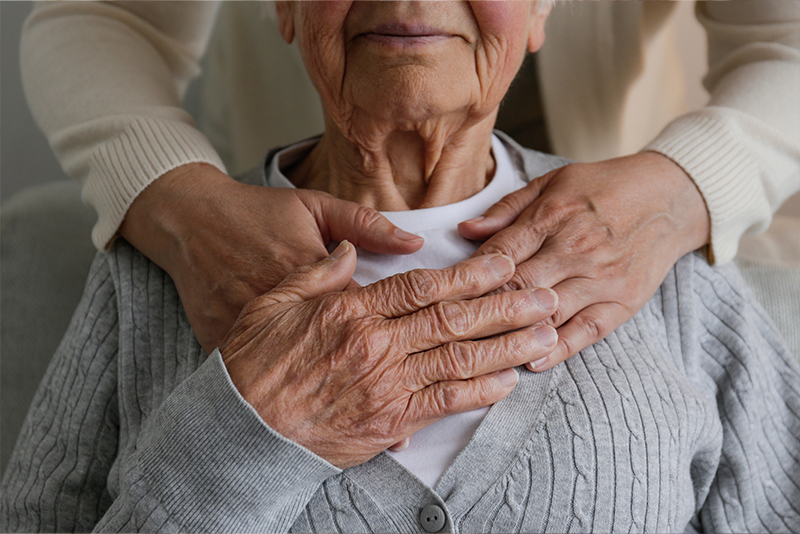Share

Five Tips to Prevent Identity Theft for the Elderly: What to Watch Out for and Precautions to Take
Identity theft is a growing concern, especially for the elderly, who are often targeted by scammers due to their perceived vulnerability. Elderly individuals may be less familiar with digital security practices, making them susceptible to various types of fraud. It’s crucial to be aware of potential risks and take proactive measures to protect personal information. Here are five key tips to help prevent identity theft for the elderly and ensure their safety.
1. Beware of Phishing Scams
Phishing scams are one of the most common ways identity thieves steal personal information. These scams often come in the form of emails, text messages, or phone calls that appear to be from legitimate sources, such as banks or government agencies. The goal of these scams is to trick the individual into providing sensitive information, such as Social Security numbers, bank account details, or passwords.
What to Watch Out For:
- Unsolicited requests for personal information via email or phone.
- Emails or messages with grammatical errors or suspicious links.
- Callers who pressure you to act quickly or threaten legal action.
Precautionary Steps:
- Never provide personal information over the phone or through email unless you have verified the legitimacy of the request.
- Hover over links to see the actual web address before clicking, and avoid clicking on unfamiliar links.
- Install anti-phishing software on your devices to help identify and block fraudulent websites.
2. Secure Personal Documents
Elderly individuals often keep sensitive documents such as bank statements, medical records, and tax forms in easily accessible places, making them a prime target for identity theft. Thieves can steal this information through mail theft or by gaining access to unsecured areas of the home.
What to Watch Out For:
- Unsecured documents left in open areas or unshredded mail.
- Unfamiliar or suspicious activity related to personal accounts or medical services.
Precautionary Steps:
- Store important documents in a locked safe or a secure location.
- Shred documents containing personal information before discarding them, especially bills and medical records.
- Sign up for electronic statements whenever possible to reduce the risk of physical mail theft.
3. Monitor Financial Accounts Regularly
One of the most effective ways to detect and prevent identity theft is by monitoring financial accounts for any unusual activity. Scammers often make small charges initially to test the waters before conducting larger fraudulent transactions. By keeping an eye on account activity, you can catch unauthorized transactions early.
What to Watch Out For:
- Small, unrecognized transactions on bank or credit card statements.
- Missing bills or statements, which could indicate that someone has redirected your mail.
Precautionary Steps:
- Set up automatic alerts for banking and credit card accounts to notify you of any suspicious activity.
- Regularly review account statements and immediately report any unauthorized charges to the financial institution.
- Consider enrolling in identity theft protection services that offer credit monitoring and alerts.
4. Use Strong Passwords and Enable Two-Factor Authentication
Many elderly individuals may not be familiar with password security best practices, making them vulnerable to hackers. Weak passwords or using the same password across multiple accounts can put personal information at risk. It’s essential to create strong passwords and take advantage of two-factor authentication (2FA) whenever possible.
What to Watch Out For:
- Passwords that are easy to guess, such as birthdays or simple sequences like “12345.”
- Websites or accounts that don’t offer additional security measures like 2FA.
Precautionary Steps:
- Create unique passwords for each account, using a mix of upper and lowercase letters, numbers, and symbols.
- Enable two-factor authentication on accounts that offer it, adding an extra layer of security.
- Use a password manager to keep track of passwords securely.
5. Be Cautious on Social Media
While social media can be a great way for elderly individuals to stay connected with family and friends, it can also be a goldmine for scammers looking to gather personal information. Oversharing details like birthdates, addresses, or even information about family members can provide scammers with the clues they need to steal an identity.
What to Watch Out For:
- Friend requests or messages from unknown individuals.
- Posts asking for personal details, even in seemingly harmless contexts, like online quizzes.
Precautionary Steps:
- Review privacy settings on social media accounts to limit who can see personal information.
- Avoid sharing sensitive details, such as birthdates, addresses, or travel plans.
- Be selective about accepting friend requests and communicating with strangers online.
Additional Precaution: Consider Professional Assistance
In some cases, elderly individuals may benefit from professional help in managing their financial and digital security. Identity theft protection services can offer monitoring, fraud alerts, and recovery assistance in case of a breach. Financial advisors or family members may also assist in reviewing accounts and setting up additional safeguards.
Conclusion
Preventing identity theft among the elderly requires vigilance, awareness, and the implementation of protective measures. By educating yourself and your loved ones on the risks and following these tips—staying cautious of phishing scams, securing personal documents, monitoring accounts, using strong passwords, and practicing safe social media habits—you can significantly reduce the risk of identity theft. Taking these steps will help protect personal information and offer peace of mind in an increasingly digital world.
For more resources and support on safeguarding elderly loved ones, visit our blog at CaringHomeCare.com.
The Importance of Hydration for Seniors Staying hydrated is one of the simplest yet most important ways to protect our health—especially for seniors. As we age, our bodies naturally retain less water and our sense of thirst diminishes. This makes older adults more vulnerable to dehydration, which can lead to serious health issues if not
Managing Chronic Pain in Older Adults Chronic pain is a common and often debilitating issue among older adults, affecting their ability to perform daily activities and enjoy life. Managing chronic pain effectively requires a combination of medical treatments, lifestyle adjustments, and alternative therapies. By understanding pain management options, seniors and caregivers can work together to
Water provides an often ideal environment for seniors to exercise, grow strength, and improve mobility and balance. Water provides just enough buoyancy to support a fraction of your elderly loved one’s body weight and just enough resistance. This makes it much easier to exercise in the water, strengthen muscles and improve your loved one’s flexibility.
Falls and their resulting injuries are a major concern for our senior loved ones. We can attribute most falls to gradually declining strength, balance, and mobility because of inactivity. The good news is this is preventable with daily exercise. Depending on the state of your loved one’s health and fitness level, some common, easy-to-do exercises
Need A Caregiver? Fill Out Form Below
With our competitive rates, we make receiving in-home care affordable regardless of whether you’re using your insurance or paying out of pocket.




